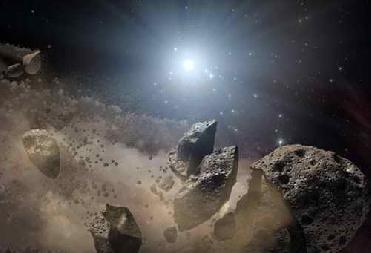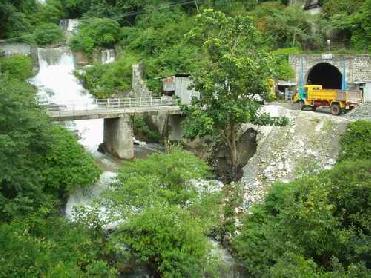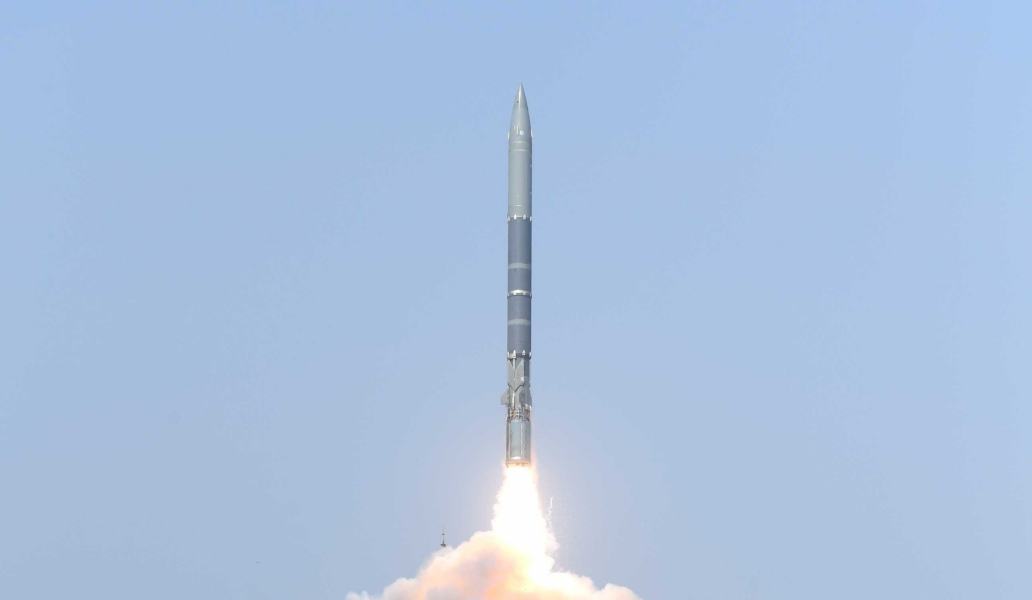
This artist's concept illustrates one such dead star, or
WASHINGTON (BNS): Dead stars have become subject of study of astronomers to throw more light on the evolution of planets.
According to NASA, astronomers who have made observations with NASA's Spitzer Space Telescope have revealed six dead ‘white dwarf’ stars littered with the remains of shredded asteroids. This might sound odd, but it turns out the chewed-up asteroids are teaching astronomers about the building materials of planets around other stars, NASA said.
So far, the results suggest that the same materials that make up Earth and Solar system's other rocky bodies could be common in the universe. If the materials are common, then rocky planets could be too, NASA said.
Michael Jura of the University of California, Los Angeles, who presented his observations at the American Astronomical Society meeting in Long Beach, California, said that if one grounds up the asteroids and rocky planets, one would get the same type of dust one sees in these star systems. “This tells us that the stars have asteroids like ours -- and therefore could also have rocky planets,” Jura said. His observations have been accepted for publication in the Astronomical Journal.
Explaining his theory, Jura said that asteroids and planets form out of dusty material that swirls around young stars. The dust sticks together, forming clumps and eventually full-grown planets. Asteroids are the leftover debris. When a star like the Sun nears the end of its life, it puffs up into a red giant that consumes its innermost planets, while jostling the orbits of remaining asteroids and outer planets. As the star continues to die, it blows off its outer layers and shrinks down into a skeleton of its former self -- a white dwarf, he said.
NASA said that Spitzer observed shredded asteroid pieces around white dwarfs with its infrared spectrograph, an instrument that breaks light apart into a rainbow of wavelengths, revealing imprints of chemicals. Previously, Spitzer analysed the asteroid dust around two so-called polluted white dwarfs; the new observations bring the total to eight, it said.
“Now, we've got a bigger sample of these polluted white dwarfs, so we know these types of events are not extremely rare,” Jura said.
“In all eight systems observed, Spitzer found that the dust contains a glassy silicate mineral similar to olivine and commonly found on Earth. This is one clue that the rocky material around these stars has evolved very much like our own,” Jura reasoned.
NASA said that the Spitzer data also suggests that there is no carbon in the rocky debris -- again like the asteroids and rocky planets in the solar system, which have relatively little carbon.
A single asteroid is thought to have broken apart within the last million years or so in each of the eight white-dwarf systems. The biggest of the bunch was once about 200 km (124 miles) in diameter, a bit larger than Los Angeles County, NASA said.
Meanwhile, Jura says that the real power of observing these white dwarf systems is still to come. When an asteroid ‘bites the dust’ around a dead star, it breaks into very tiny pieces. Asteroid dust around living stars, by contrast, is made of larger particles. By continuing to use spectrographs to analyse the visible light from this fine dust, astronomers will be able to see exquisite details -- including information about what elements are present and in what abundance. This will reveal much more about how other star systems sort and process their planetary materials. It's as if the white dwarfs separate the dust apart for us, Jura explained.
 Previous Article
Previous Article Next Article
Next Article













The Indian Air Force, in its flight trials evaluation report submitted before the Defence Ministry l..
view articleAn insight into the Medium Multi-Role Combat Aircraft competition...
view articleSky enthusiasts can now spot the International Space Station (ISS) commanded by Indian-American astr..
view article